
SHAUKAT VS THE D
A bulky ambition of bloody battles
On a quiet Wednesday night, the violent sounds of bodies slamming against the floor can be heard from behind a garage door, echoing through the empty halls of a badminton court.
Behind the door lies a wrestling ring, occupied by muscular men and women dressed in bright colours, who posture, yell and solve their problems in the middle of the ring.
The ring is a training ground for folks with a unique passion that not many can understand.
It is home for Ayez Shaukat Fonseka, a full-time professional wrestler and owner of Malaysia Pro Wrestling (MYPW), Malaysia’s first and only professional wrestling organisation.
Ayez, who is fondly known across the South-East Asian wrestling community as ‘Shaukat’, believes that professional wrestling is more than just sports entertainment.
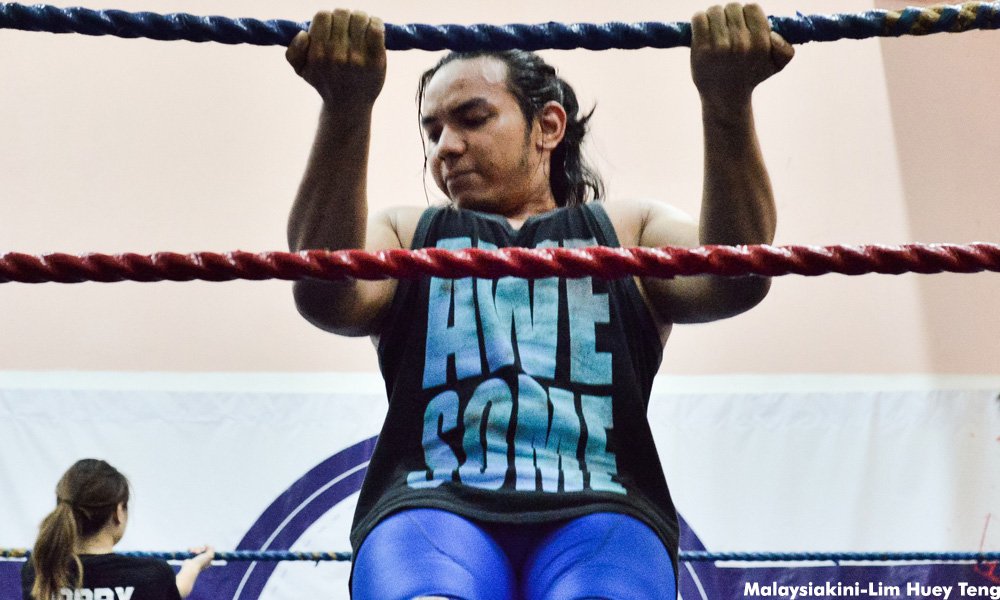
Ayez Shaukat Fonseka

Shaukat’s in the training time
“I do believe that pro wrestling is a form of art,”
said the 28 year-old
Professional wrestling is a scripted form of sports entertainment, where the outcome of each match is predetermined by a creative team.
It is story-driven and features heroes known as “faces” and villains known as “heels” and the story is often told by the performers through their actions in and out of the ring, Ayez explained.
Professional wrestlers such as Ayez are taught how to deliver and receive moves safely to reduce risk of injury for both performers.
The former stuntman and national muay thai fighter also works as a part-time action director, stunt coordinator and filmmaker.
MYPW has occasional wrestling shows each month and during that period, Ayez works a total of nine jobs to keep up with the cost of running the shows.
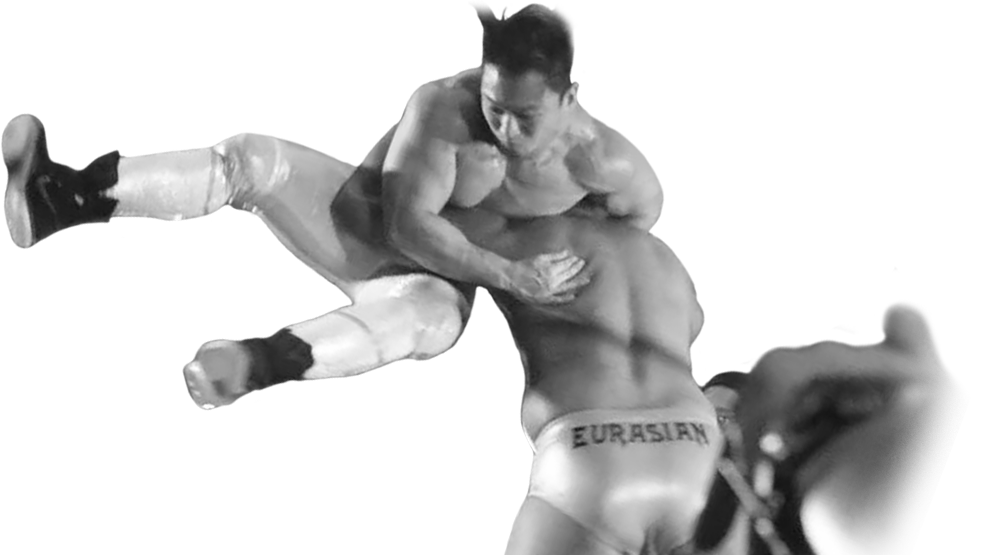
“The most is nine lah. If I take another one, I’d die,”
he joked
This is his story,
in his own words.
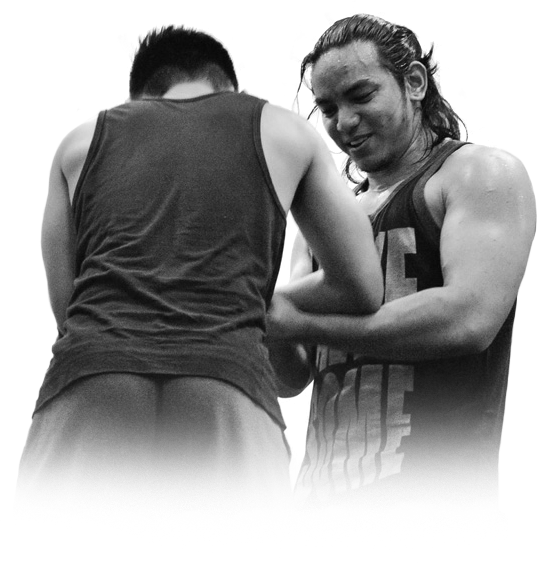
I started watching wrestling when I was four.
The first match I caught was Kamala vs the Undertaker in the Survivor Series 1992. I remember it very clearly because that was the reason why I started watching wrestling. I was only four. I was scared of the Undertaker, but I was even scared of Kamala.
When I watched the match somehow, I already knew that wrestling was sort of a performance. I fell in love with the characters and the way they told a story through fighting.
As a young
healthy boy
watching pro wrestling, my head was injected with images of macho men, guys fighting, action. So I grew to love action movies, and then martial arts and everything.
Because there wasn’t a platform for pro wrestling, I ventured out into Muay Thai and then I did Mixed Martial Arts and boxing.
I first started learning martial arts when I was 14. It actually was my career path when I was 16 till I was 21. I was a professional Muay Thai fighter.
When I was 14, obviously my parents did not encourage me, because Muay Thai is known to be a macho sport. It’s very aggressive and parents don’t want to see their children getting hurt, but I was very stubborn.
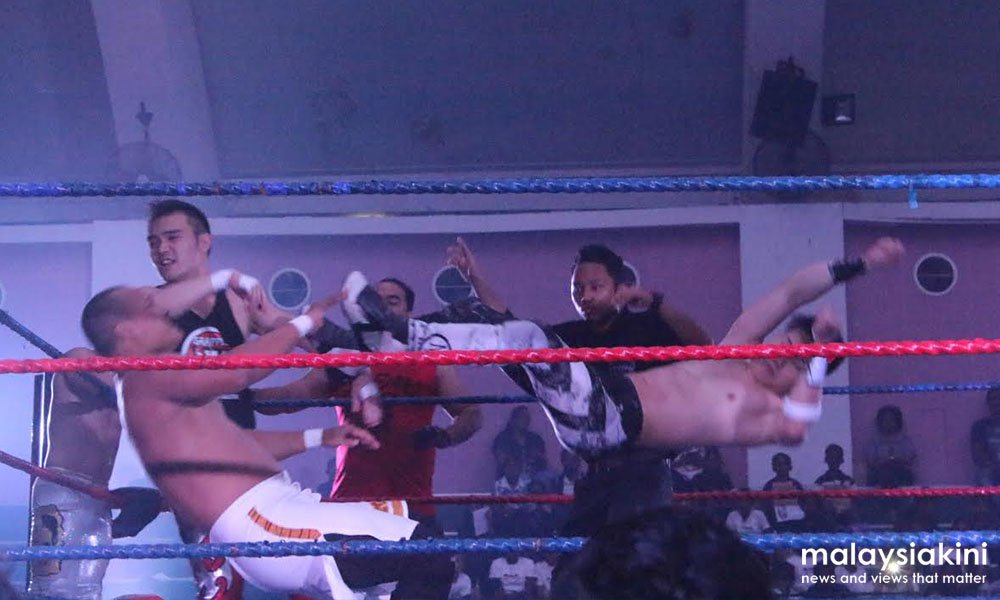
So I started winning and increasing my portfolio
as a prizefighter and that was when they start to give me space and let me do my stuff.
When I was 17 years old, I was just an extra on the set at that time and one of the testing directors asked me if I could fight. So I said I could. So he introduced me to the stunt coordinator, to start me off as a stuntman.
Because of my stunt experience, my stunt background, I learnt wrestling a lot faster than people normally would.
My mentor, Ric Drasin, said what I learnt in three weeks, was what the average student would learn in three months. I was able to pick up his teachings very quickly.
I can’t feel my face on the left side
and I cannot feel my fingers on the left side.
At age 21, I suffered nerve damage diagnosed as Bell’s Palsy and that basically forced me to retire from my professional fighting career, so I focused mainly on just doing stunts and film.
I also developed this boxing slur, basically a condition where it is very difficult for you to talk. If I don’t put in the effort, when I talk, I will just slur, mumble, you know like Sylvester Stallone, and how some boxers talk.
I still have the boxer’s slur but Bell’s Palsy, no.
I HAVE SUFFERED MORE INJURIES in my three year career in pro wrestling, despite my five year career in Muay Thai and MMA.
The worst was a knee dislocation. Also if I take too big a hit on my stomach, I can cough up blood.
I feel that pro wrestlers are very tough people. We don’t give them much credit but we should because I got a lot of friends in the Southeast Asian community, pro wrestlers, who get hurt during a match with injuries like broken noses, dislocated joints, whatever, but continue just for the sake of the fans.
In my match with Chris Panzer, a Filipino, what happened was I popped my knee. When I was doing a move called the German Suplex on him, it popped out of place, so I had to put it back inside.
Panzer wanted us to end the match but I just had to continue because I felt that I had not entertained the audience enough yet.

The number one reason I continue is passion.
I really love wrestling. I’ve always wanted to do it since I was a kid. And now I got it. So I really really don’t want to let it go. It just pushes me to be better and what drives me the most, is the ability to evoke the emotions of the fans in the arena, so it’s a very cool thing to be able to play with the emotions of the fans.
For example the previous show in MYPW Resistance on Sunday, I was getting beaten up by the Din, another character. During that time, one member of the audience was crying because I was getting beaten up. So I feel good because it showed that I was doing well as a performer.
It hurt a lot
A lot of us got hurt during the earlier stages. It was for the first year we used a Muay Thai ring but it was a good thing as well. Once we were used to the pain of taking bumps in the Muay Thai ring, the wrestling ring, felt like a bed to us because we were already used to the pain.
So we collaborated with Peminat Gusti Malaysia and Malaysian Wrestling Club for one of their conventions called PGMania, and we had our show for the first time ever at that convention.
At first everyone was very skeptical. There were people like, A lot of us got hurt during the earlier stages. It was for the first year we used a Muay Thai ring but it was a good thing as well. Once we were used to the pain of taking bumps in the Muay Thai ring, the wrestling ring, felt like a bed to us because we were already used to the pain.
So we collaborated with Peminat Gusti Malaysia and Malaysian Wrestling Club for one of their conventions called PGMania, and we had our show for the first time ever at that convention.
At first everyone was very skeptical. There were people like,
“Malaysian people, peminat gusti trying to pretend they can wrestle themselves.”
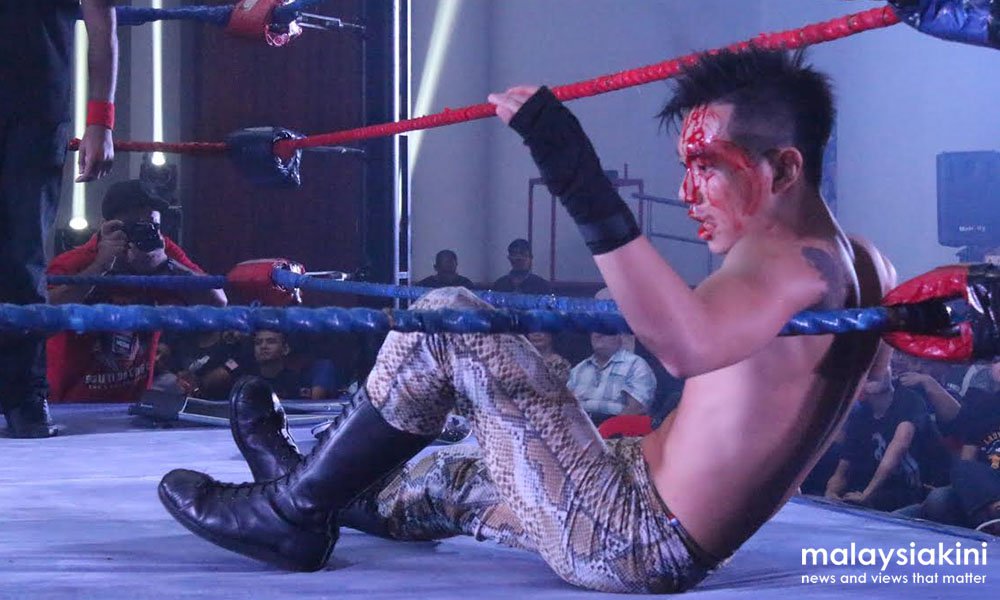
It was really bad
Before they even saw us, we got a lot of negative comments from fans and everything, all making fun of us, but on that night we proved them wrong because the matched that we put up was on par with international quality, and that definitely shut them up and things have been going like crazy after that show.
It was very difficult because the first year of operating I only had four students. We were training professionally, religiously, but for the people who didn’t know what was going on, when they saw the pictures, when they saw the videos, to them it was just like five kids playing wrestling.
So it was very difficult because for me to motivate my boys when they kept on getting bashed on the internet, it was very disheartening but I kept giving them motivation so we can prove these guys wrong and so we did.
I definitely feel that there’s potential
because we’ve been approached by a lot of TV stations and stuff to try and stretch our appeal. So I think that there’s a high probability that MyPW will be on mainstream media soon. The main concern is the funding.
To be totally honest, usually our shows, the ticket sales do not cover the cost, because we have to fly in international wrestlers.
That’s the reason why I have nine jobs usually during showtime!
By the way it’s growing now, I feel that it can be very big like how NJPW is in Japan. I feel that we can be a promotion that every wrestler in Southeast Asia wants to wrestle in.

I’m thankful that I’m now a full time wrestller
So off-days I go to the gym and on-days, I train harder. So for me that’s my way of life now. It’s either gym or pro wrestling training. That’s about it, until there’s a show or unless there’s a shoot, because right now I’m an action director as well.
So I think it’s easy for me but it’s a bit difficult for those that are working and studying. They don’t do this full-time. They have commitments.
The reason why I’m on the frontline
in the pro wrestling scene is because my name is quite well-known in Singapore, in Thailand, Hong Kong and Philippines, so I need to put in my efforts to pull the crowds to MyPW.
But there will be a time where I would need to stop because I’m 28 and I have got a lot of injuries already. My plan is to find a time when I can stop, and then I will focus more on management.

Wrestlers are fake
Wrestlers are fake. Wrestlers are into drugs and stuff. We get that a lot.
But we are performers as well and we are also elite athletes as well in the sense that we not only have to act, but we must also be able to perform like real athletes.
We need to have the agility, the coordination, the speed, the stamina. Everything that an athlete has, a wrestler needs. So it’s a combination of these two. People don’t respect wrestlers but wrestlers are among the best athletes in the world.
I will always get laughed at
I will always get ridiculed because of my dreams but I believe that I have already created a platform now.
So if any of you out there wants to become a pro wrestler, don’t be shy. There’s a whole bunch of people who could be your family.
Just come and join us, share your passion with us.
